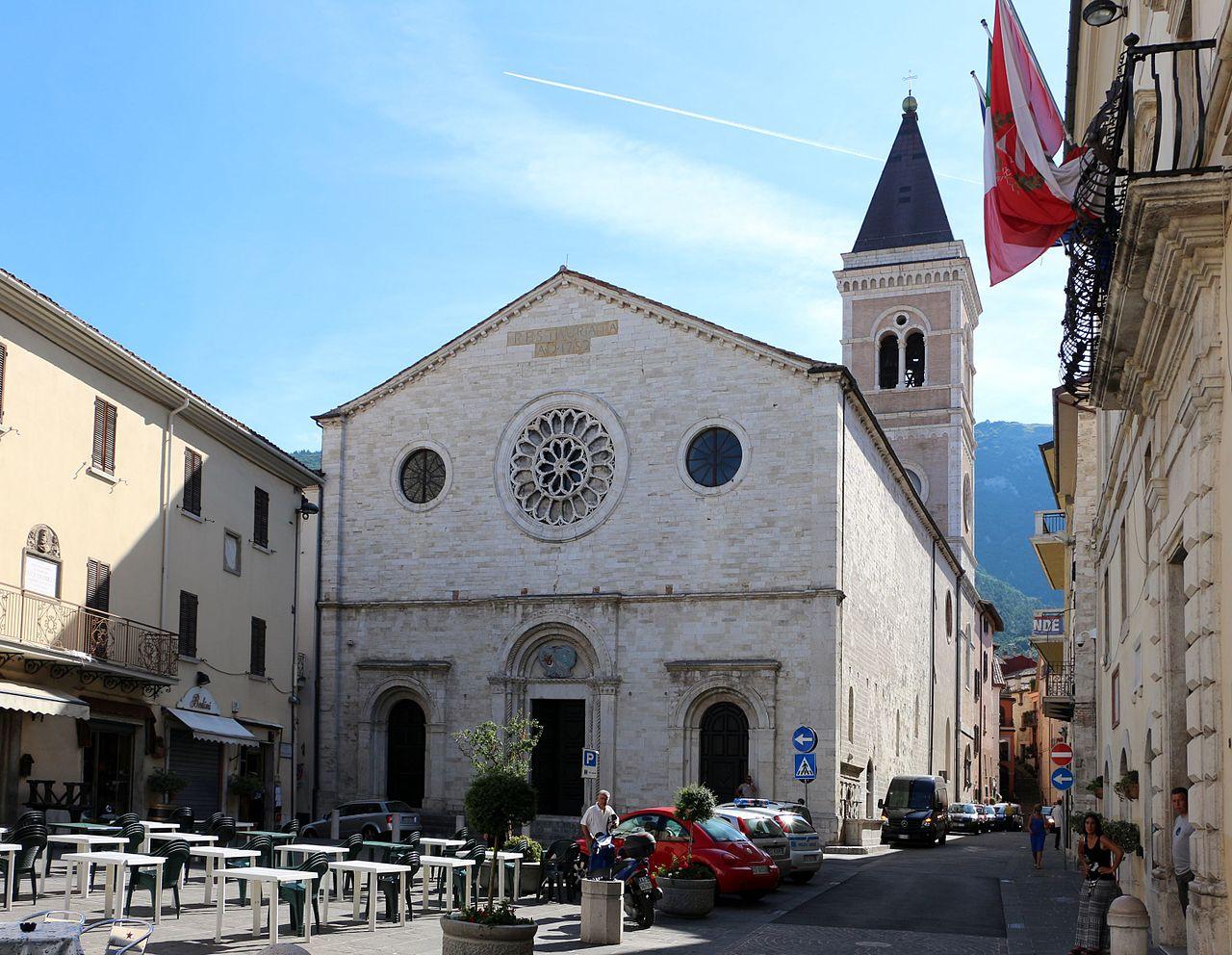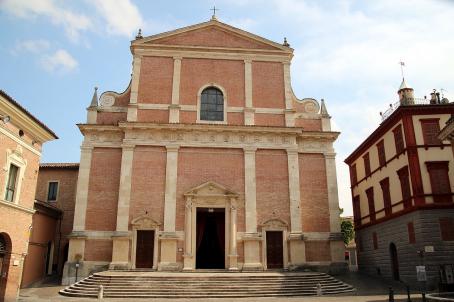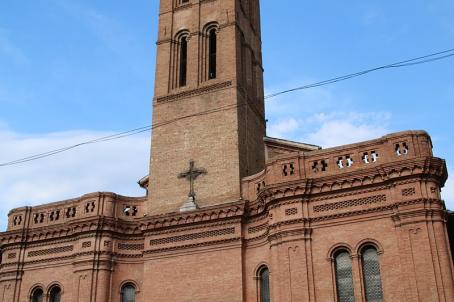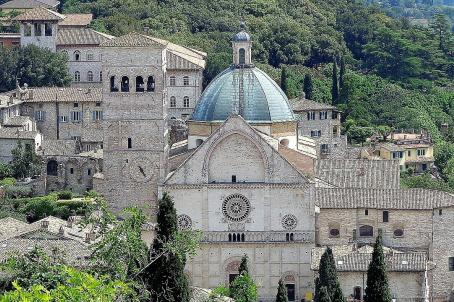Gualdo Tadino Cathedral

Gualdo Tadino's current cathedral, dedicated to Saint Benedict, is called "San Benedetto nuovo" to distinguish it from another building, "San Benedetto vecchio", built by the Benedictines as early as 1006 outside the city walls. The new abbey and the adjoining church were built in Romanesque and Gothic style, but underwent further renovations in the following centuries, especially in the 18th and 19th centuries: the interior was completely rebuilt in the 19th century by the architect Virginio Vespignani and most of the pictorial decorations date back to 1924 and are the work of Ulisse Ribustini.





